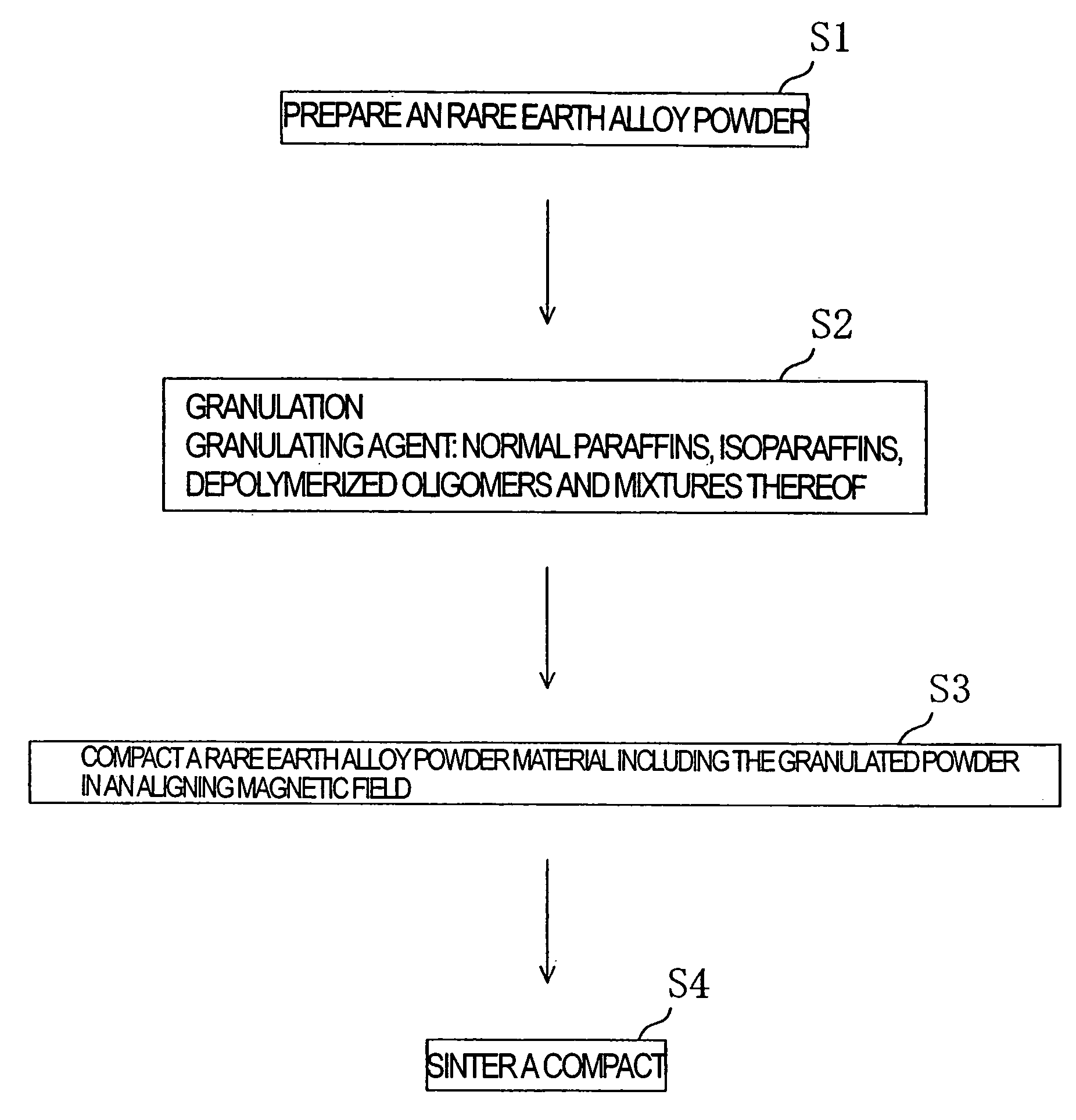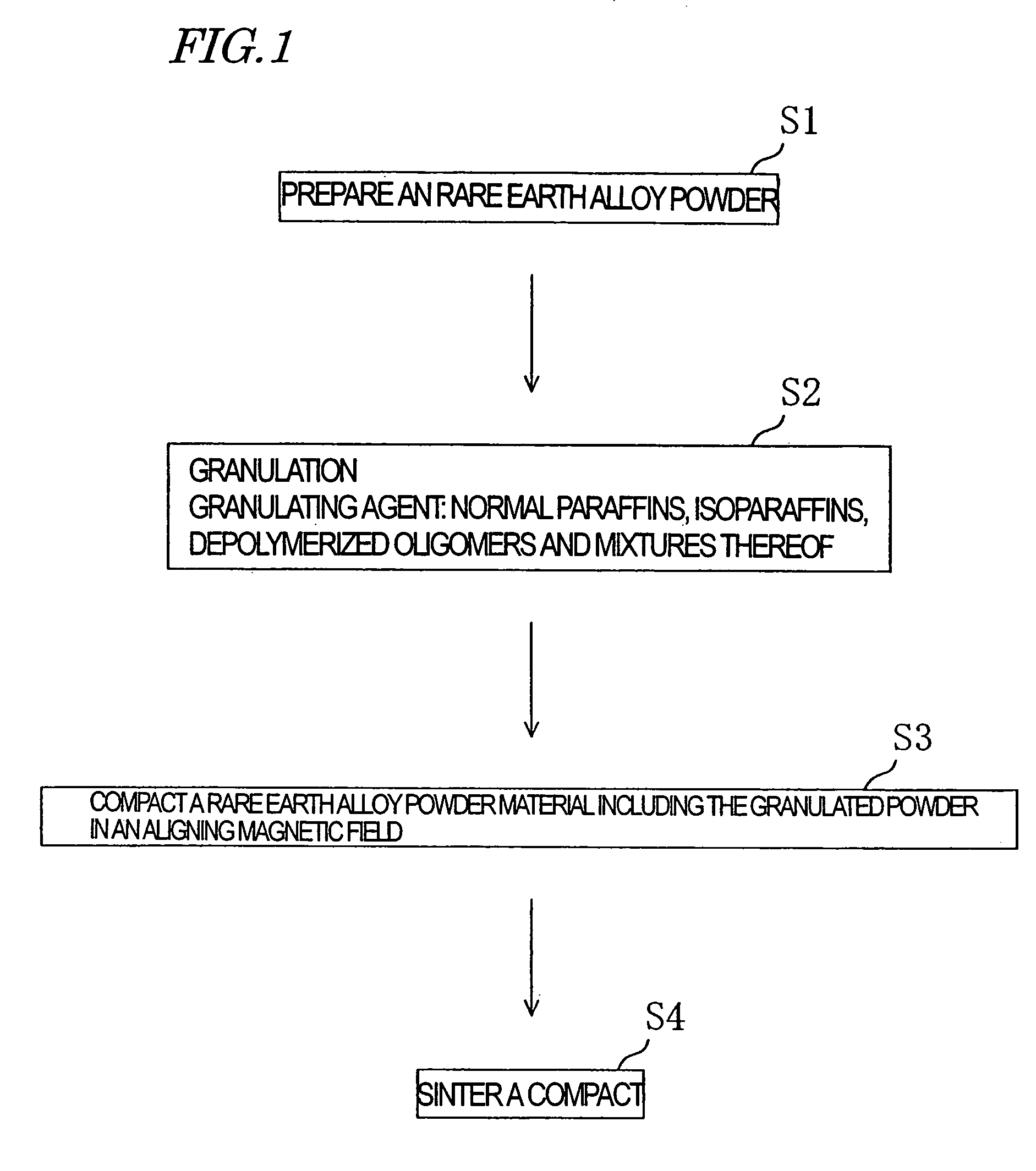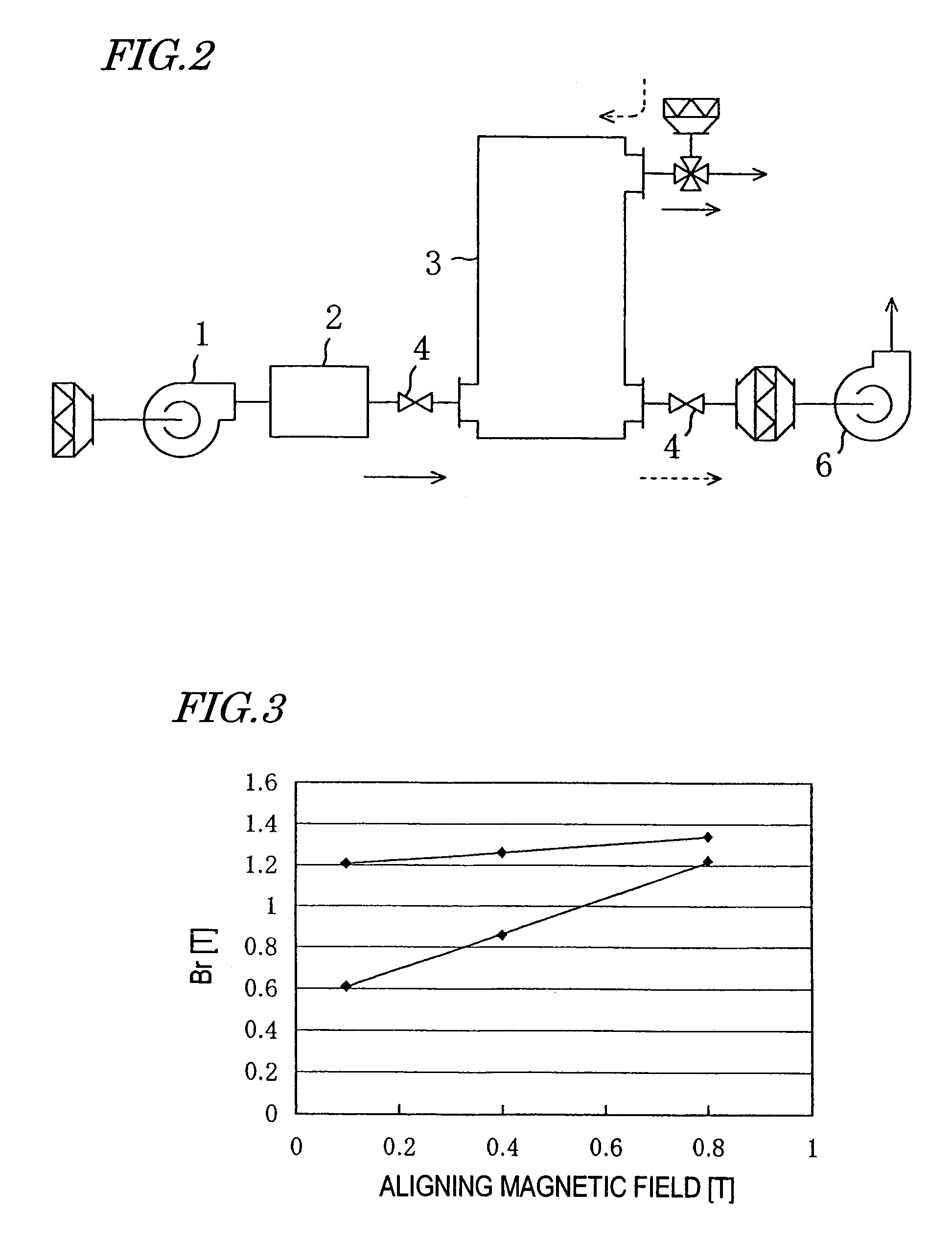Method for producing granulated powder of R-FE-B type alloy and method for producing R-FE-B type alloy sintered compact
a technology of granulated powder and alloy, which is applied in the direction of magnetic materials, magnetic bodies, transportation and packaging, etc., can solve the problems of poor productivity, failure to impart sufficient compactibility, and small mean particle size, and achieve excellent flowability and compactibility, and high production efficiency.
- Summary
- Abstract
- Description
- Claims
- Application Information
AI Technical Summary
Benefits of technology
Problems solved by technology
Method used
Image
Examples
examples
[0064]Hereinafter, examples of the present invention will be described.
[0065]An R—Fe—B alloy powder was prepared in the following manner. A molten alloy was prepared using 99.9% purity electrolytic iron, a ferroboron alloy containing 19.8% of B, and Nd and Dy having a purity of 99.7% or more as the starting materials. The molten alloy obtained was subjected to the strip casting process, to obtain R—Fe—B alloy flakes having a composition of 14.5 at. % of Nd, 0.5 at. % of Dy, 78.8 at. % of Fe and 6.2 at. % of B. The flakes obtained were finely pulverized in an inert gas atmosphere (for example, N2 gas at a gas pressure of 58.8 MPa) with a jet mill, to obtain a fine powder having a mean particle size of 3 μm.
[0066]A granulated powder was produced by the fluidized bed granulation process (using a swing processor from Fuji Paudal Co., Ltd., for example). Various kinds of granulating agents were used for the granulation. The compositions and amounts of the granulating agents used for prod...
PUM
| Property | Measurement | Unit |
|---|---|---|
| mean particle size | aaaaa | aaaaa |
| boiling point | aaaaa | aaaaa |
| mean particle size | aaaaa | aaaaa |
Abstract
Description
Claims
Application Information
 Login to View More
Login to View More - R&D
- Intellectual Property
- Life Sciences
- Materials
- Tech Scout
- Unparalleled Data Quality
- Higher Quality Content
- 60% Fewer Hallucinations
Browse by: Latest US Patents, China's latest patents, Technical Efficacy Thesaurus, Application Domain, Technology Topic, Popular Technical Reports.
© 2025 PatSnap. All rights reserved.Legal|Privacy policy|Modern Slavery Act Transparency Statement|Sitemap|About US| Contact US: help@patsnap.com



